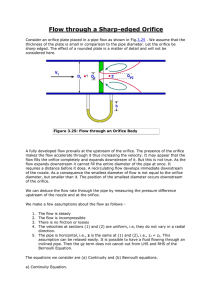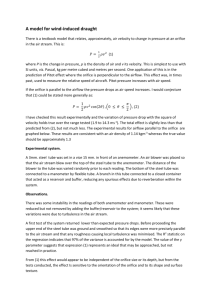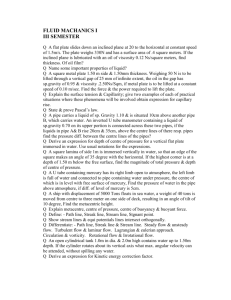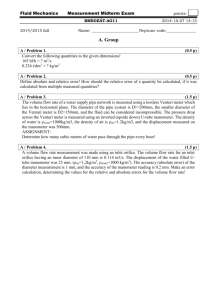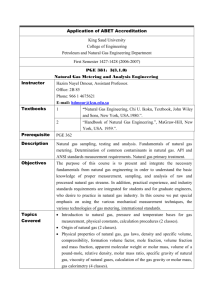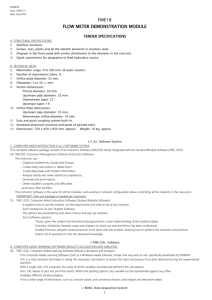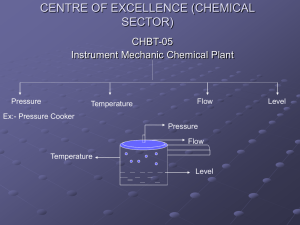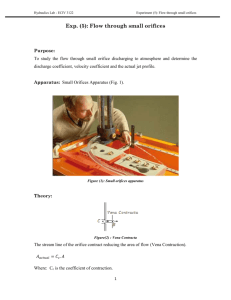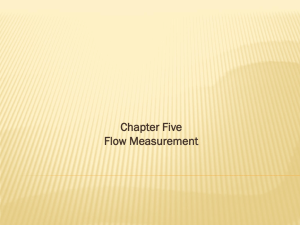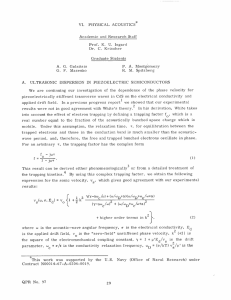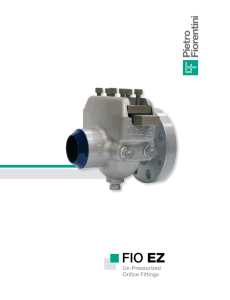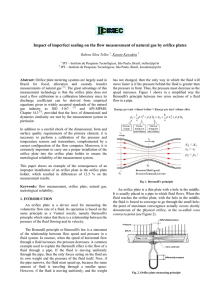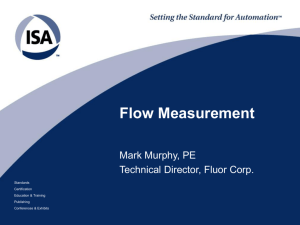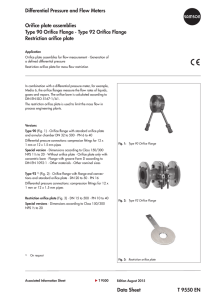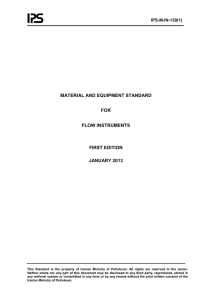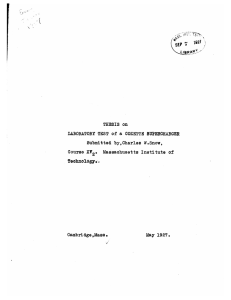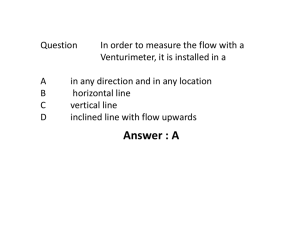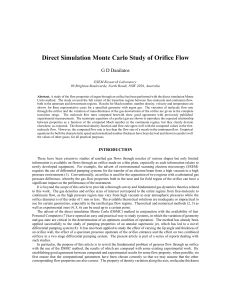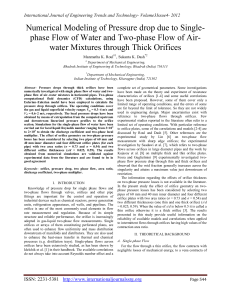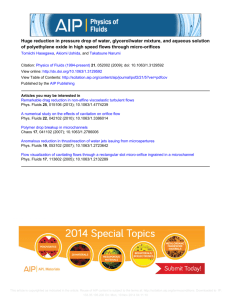Design of Experiment --- Flow Measurement with Orifice Plate Meter
advertisement
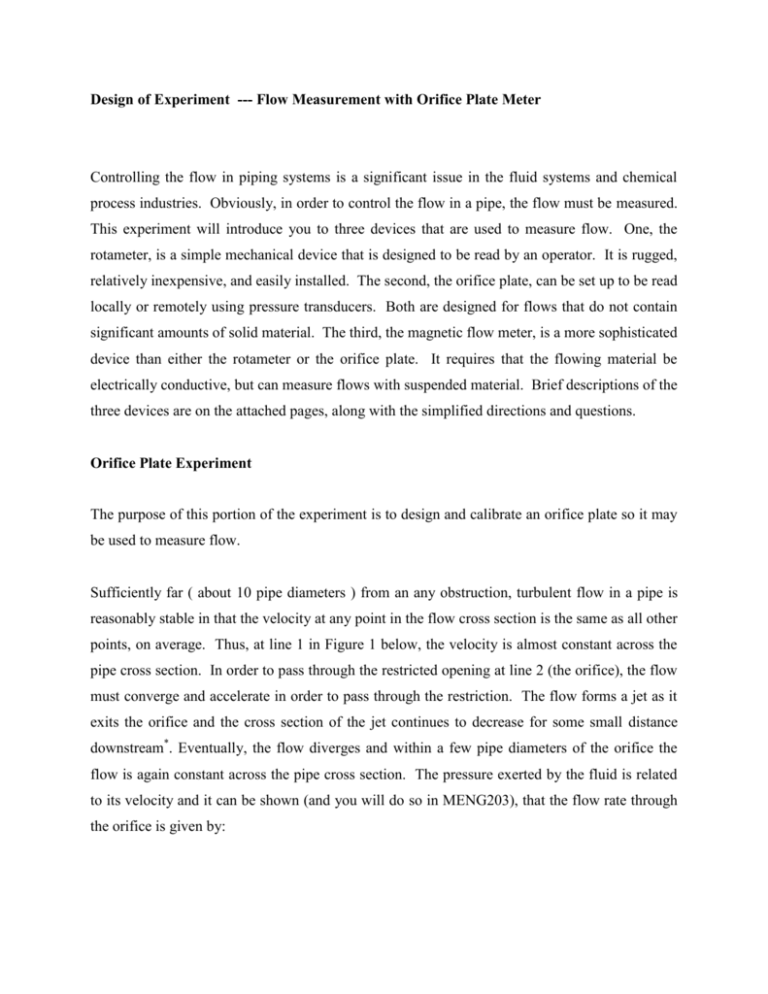
Design of Experiment --- Flow Measurement with Orifice Plate Meter Controlling the flow in piping systems is a significant issue in the fluid systems and chemical process industries. Obviously, in order to control the flow in a pipe, the flow must be measured. This experiment will introduce you to three devices that are used to measure flow. One, the rotameter, is a simple mechanical device that is designed to be read by an operator. It is rugged, relatively inexpensive, and easily installed. The second, the orifice plate, can be set up to be read locally or remotely using pressure transducers. Both are designed for flows that do not contain significant amounts of solid material. The third, the magnetic flow meter, is a more sophisticated device than either the rotameter or the orifice plate. It requires that the flowing material be electrically conductive, but can measure flows with suspended material. Brief descriptions of the three devices are on the attached pages, along with the simplified directions and questions. Orifice Plate Experiment The purpose of this portion of the experiment is to design and calibrate an orifice plate so it may be used to measure flow. Sufficiently far ( about 10 pipe diameters ) from an any obstruction, turbulent flow in a pipe is reasonably stable in that the velocity at any point in the flow cross section is the same as all other points, on average. Thus, at line 1 in Figure 1 below, the velocity is almost constant across the pipe cross section. In order to pass through the restricted opening at line 2 (the orifice), the flow must converge and accelerate in order to pass through the restriction. The flow forms a jet as it exits the orifice and the cross section of the jet continues to decrease for some small distance downstream*. Eventually, the flow diverges and within a few pipe diameters of the orifice the flow is again constant across the pipe cross section. The pressure exerted by the fluid is related to its velocity and it can be shown (and you will do so in MENG203), that the flow rate through the orifice is given by: Q C A2 2 P A2 (1 22 ) A1 (1) Where Q is the volumetric flow rate A1 is the cross sectional area of the pipe A2 is the cross sectional area of the orifice P is the pressure drop (P1 - P2) C is coefficient of discharge is the fluid density The coefficient of discharge is dependent on the ratio A2/A1 and somewhat dependent upon the Reynolds Number. The Reynolds Number is used to characterize the flow of fluids and its definition should be remembered. The definition is: Re Du (2) where D = pipe diameter u = fluid velocity = fluid density = fluid viscosity Fortunately, this dependence on Re is relatively weak and for our purposes, we can treat C as a constant. For a particular installation, A1 and A2 are constants, so many of the terms in equation (1) can be collected and (1) rewritten as: QK 2 P (3) In this experiment, vary the flow rate through the orifice plate by slowly closing the valve on the discharge side of the flow system setup. Measure the flow at any given valve position by using an appropriate container and stop watch. Record the pressure difference (P) at the same time as the flow is being measured. A plot of Q vs P will result in a calibration curve for the orifice plate. Is this a straight line? Equation (1) is dimensionally consistent and "C" is dimensionless. Convert everything to consistent units and determine the value and units of "K". In this experiment, the pressure difference is displayed by two different methods and you can develop calibrations curves for any one method. Method one uses the manometer, while method two uses the electronic display from the differential pressure transducer. (Note – this signal could be taken to a computer for display via a LabView vi.) For the manometer, the pressure drop is directly proportional to the difference in height between the liquid heights in the two legs of the manometer. The differential pressure transducer displays a value that is proportional to the pressure difference. Is this displayed value a voltage or a current? Is the resulting calibration curve linear? Since the fluid is water, the following properties are approximately true: Density: 999 kg/m3 Viscosity: 1.002 x 10-3 Pa s DIAMETER GROUP 1 GROUP 2 GROUP 3 GROUP 4 [cm] D1 10 8 9 12 D2 1 1 0.8 1 * The point of the minimum jet diameter is called the vena contracta and ideally it is at this point that the down stream pressure measurement is made. In practice, however, the downstream pressure measurement is made in the flange near the orifice. Since the diameter of the vena contracta is a function of the orifice diameter, we can bundle all the variation into one coefficient (C in equation 1) and use the orifice diameter. Thus the value of C in equation 1 is a function of Re and A2/A1. 1 2 P1 P2 Figure 1: Orifice Plate Schematic Note: Each student will perform the design according to the list given by the lecturer. If you produce prototype of the orifice meter you will get extra 10 points bonus mark.
